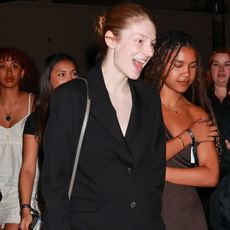Five Years After *That* Article, Street Style Shows No Signs of Slowing Down
This feature is dedicated to our #NoChangeNoFuture initiative. From the Women’s March, to Australia voting yes to same sex marriage, and the #MeToo movement, 2017 taught us to look beyond ourselves and come together as a collective of powerful women who are writing our own history. Join us as we cancel setting one-dimensional personal resolutions this January and commit to being the change we want to see. Because without change, there is no future.

Come back in time with us, and imagine that you’re in February, 2013. It’s the middle of New York Fashion Week, “I Knew You Were Trouble” by Taylor Swift is the song of the moment, and Suzy Menkes just published her article “The Circus of Fashion” for The New York Times.
Pronouncing the fact of a “genuine difference between the stylish and the showoffs”, Menkes spoke of the rising phenomena of street style. Dismissing street style as a “[gaudy] parade”, Menkes lamented the death of true fashion and its displacement caused by normal people.
Menkes’ article seemed like a vendetta against street style in general—especially in retrospect. While it’s understandable that she may have felt a certain discomfort with the shifting scenery surrounding fashion week and technology’s ever-accelerating role within it, when considering the staying power that street style has had over the past five years, "The Circus of Fashion" seems to have come from a place of fear of the unknown—as opposed to genuine concern—for the future of the industry.
While there was a deluge of responses to Menke’s article, one that still rings loud and clear despite all the changes we’ve witnessed since 2013, is Leandra Medine’s post entitled, “Blog is a Dirty Word” on Man Repeller, as it still encapsulates the sentiment that fashion is in a state of change, but that’s the way it should be. In her article, Medine insightfully noted, “tradition and innovation have little to do with one another and in the battle of success and relevance between the former and latter, the latter has proven itself quite victorious.”
Considering the fashion landscape of 2018, there is no doubt that street style has indeed proven to emerge as a champion. With the interplay between social media and fashion stronger than ever, bloggers and influencers are now equally important to designers as the editors and insiders mention in Menkes' article. While Menkes’ piece suggested that fashion has a few worthy, select candidates for whom fashion should be presented, Medine proves to have been more accurate with her prediction that “Darwinism will always prevail. The strong will continue to survive and the weak will eventually begin to wean off.” While bloggers without a true point of difference have come and gone since 2013, the power of street style has prevailed nonetheless.
In fact, correlating with the persistence of street style, runway fashion needs to also reinvent itself. If what is happening on the cement runways is more exciting and far-reaching than the shows themselves, then what is the purpose of producing these huge events? Designers, asking this very question, have come to see that there are other (less expensive) ways to get their brand more traction than being featured in the week-long lineup. As Jenna Igneri, associate fashion editor at Nylon stated in an interview for the site, “I think fashion shows are becoming more and more irrelevant as time goes on. Thanks to technology, anyone can view a fashion show or presentation from anywhere in the world.”
Perhaps, then, it is wrong to view runway fashion and street style as fierce competitors who must battle it out until the best one wins. Rather, we may want to consider one as being a regeneration of the other. With new platforms like Instagram, it has become possible for designers to put on a new iteration of the traditional fashion show every day. Now, brands can also invest in influencers who provide a constant stream of interaction with them—not only everyday, but to a large, diverse audience.
While Menkes may have revelled in the exclusivity that the fashion world encouraged, the scene has shifted so drastically. In a world where inclusiveness and representation—of all people, not just a select few— has become valued, the concept that fashion is only for those worthy of it just doesn’t sit so well anymore. And if you need an illustration to prove it, look to the fact that Cardi B sat next to Anna Wintour on the runway at Alexander Wang’s New York Fashion Week presentation last week; and yes, she was wearing $99 boots. But did it matter? No.
All things considered, it is difficult to predict what the future of runway fashion may look like. With more and more designers choosing not to put on shows, perhaps Menkes was correct to worry that the fashion world that she knew may be lost to us forever. But that doesn’t mean we should cower in the face of street style, dismissing it as somehow of less importance simply because normal people can be a part of the phenomenon. Over the past five years, street style stars have proven that anyone can have style; it isn’t something that should be accessible only to those with a certain reputation or social status. Perhaps bloggers and Instagrammers are just the next generation of runway supermodels.
Whether you like this idea or not, it is the reality we are facing. If fashion represents us as individuals and as a society, it should change alongside the arising technological advances and societal values which impact us every day.
Fighting the status quo will do nothing to cultivate innovation, so perhaps instead of fearing that “something has been lost” as Menkes did five years ago, we should welcome the change with open arms. If we look forward with hope for innovation, rather than in mourning of bygone days, the shifting paradigm could be a beacon of great hope for the industry as a whole. Yes, things are changing quickly. But that means there’s new potential for designers, editors, brands, and even just those normal people to tap into. And that new potential, in and of itself, should be cause for celebration, not concern.
Related: How This Designer Is Using Technology to Get Ahead of Fashion’s Biggest Trends
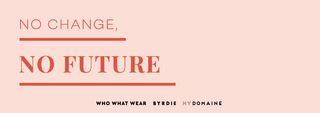
-
 All My Outfits Right Now Are Built Around These 5 Items
All My Outfits Right Now Are Built Around These 5 ItemsI plan to transition these right into spring.
By Caitlin Burnett
-
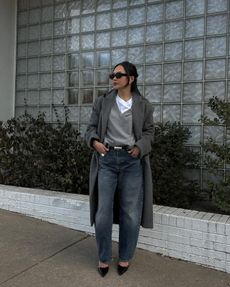 If You Have 60 Seconds to Get Dressed, Just Wear One of These Easy Outfits
If You Have 60 Seconds to Get Dressed, Just Wear One of These Easy OutfitsSet your timer.
By Aemilia Madden
-
 5 Colors to Tap Into If You Want to Look Richer in 2024
5 Colors to Tap Into If You Want to Look Richer in 2024Your inspo starts here.
By Kristina Rutkowski
-
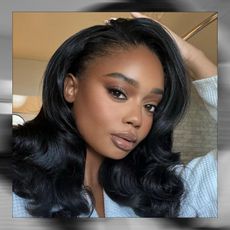 I Started My Day Like Akilah Releford Gould for a Week: 5 Habits I'm Keeping
I Started My Day Like Akilah Releford Gould for a Week: 5 Habits I'm KeepingSuch a game changer.
By Maya Thomas
-
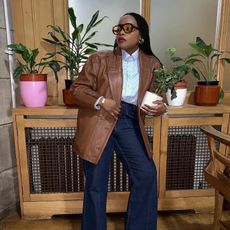 I Saved a Ton of Outfit Ideas This Year—These 8 Are the Ones I Actually Tried
I Saved a Ton of Outfit Ideas This Year—These 8 Are the Ones I Actually TriedI scrolled so you don't have to.
By Perveen Singh
-
 One Busy NYC Fashion Editor, One Seriously Chill Fall Routine
One Busy NYC Fashion Editor, One Seriously Chill Fall RoutineFrom sunup to sundown.
By Virginia Yapp
-
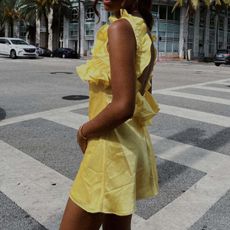 When I Wear This Brand, I Get Dozens of Compliments—Here Are Its Best Pieces
When I Wear This Brand, I Get Dozens of Compliments—Here Are Its Best PiecesEvery item in the collection was designed for a princess.
By Sierra Mayhew
-
 OMG: My Fave Laundry Detergent That Smells Like Le Labo Is on Amazon Prime Day
OMG: My Fave Laundry Detergent That Smells Like Le Labo Is on Amazon Prime DayOnly for a couple of days!
By Kat Collings

